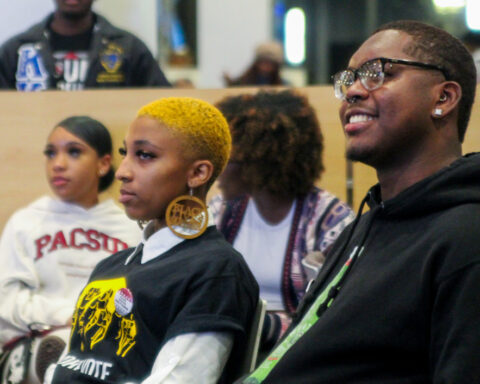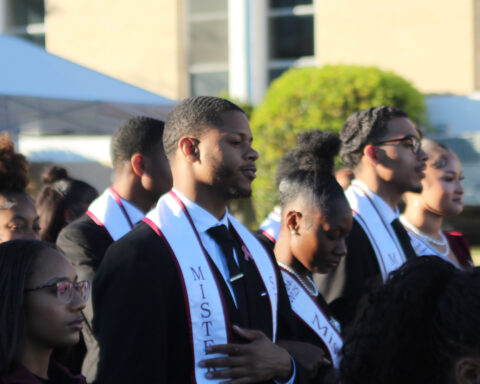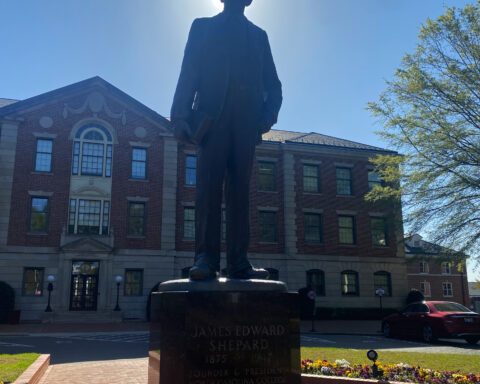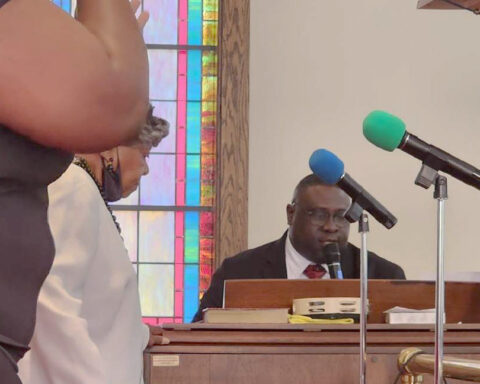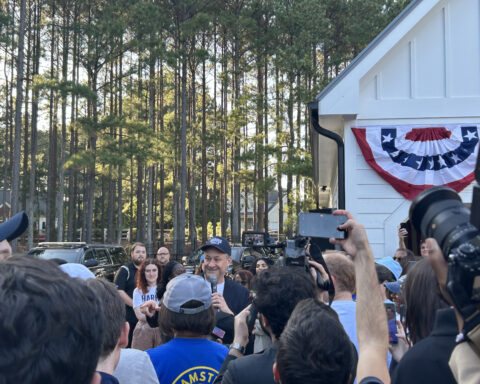In the early 20th century Durham was home to dozens of African American businesses, including grocery stores, training schools, along with fish and meat merchants.
Mutual Community Savings, N.C. Mutual Life Insurance, and Mechanics & Farmers Bank, originally located on Parrish Street, both of which remain today, met the insurance and banking needs of the black community in Durham. Hayti had a black owned theater, the Regal, and a black owned hotel, the Biltmore Hotel, and the famed district called “Black Wall Street.”
Hayti extended along Fayetteville St, Pettigrew, and Pine street. It had about 5,000 residents, including a large black middle class, many of whom attended N.C. Central University (at the time called North Carolina College of Negros, 1925).
Blacks boasted the highest rates of home ownership and per capita income in the nation during that time according to a 1999 article “Durham Home to Original Black Wall Street” by WRAL.
W.E.B. DuBois remarked on the success of Durham’s black middle class in his often quoted 1912 article “The Upbuilding of Black Durham.”
“To-day,” he wrote, “there is a singular group in Durham where a black man may get up in the morning from a mattress made by black men, in a house which a black man built out of lumber which black men cut and planed; he may put on a suit which he bought at a colored haberdashery and socks knit at a colored mill; he may cook victuals from a colored grocery on a stove which black men fashioned; he may earn his living working for colored men, be sick in a colored hospital, and buried from a colored church; and the Negro insurance society will pay his widow enough to keep his children in a colored school. This is surely progress.”
But by mid-century Durham’s black community would begin hitting hard times. African-American neighborhoods across Durham County lost their prominent presence.
Much of Hayti was demolished in the name of urban renewal in the 1960s. Some 4,057 households and 502 businesses across Durham were demolished for the construction of Highway 147, which cut through the heart of the Hayti community splitting the commuity and its business district.
More recently, Durham’s black community is faced with a 21st century two-step version of urban renewal. Step one is the systematic disinvestment in black communities, followed by “gentrification.”
The term was coined by British sociologist Ruth Glass in 1964. She used “gentrification” to describe the influx of affluent Londoners into the dilapidated sections of inner London, which pushed out the city’s longtime residents, largely because of increased rents.
In north Durham near Central Park, the El Kilombo Community Center was forced to shutdown in 2015 when the rent slowly increased for nine years, and suddenly doubled one month. The center provided nearby residents with access to health clinics, offered art classes, theater programs, workshops, and computer literacy classes.
Disinvestment has been studied by Durham community activist Mel Norton in her “The Big G, Dynamics of Neighborhood Change,” a fall 2015 study that examined the consequences of disinvestment on six traditionally black neighborhoods.
According to Norton, currently apart of the Durham People’s Alliance, housing prices in some black neighborhoods, such as Cleveland-Holloway, Walltown, Northeast Durham, and Hayti, have jumped as much as 500 percent.
“Everybody seems to be coming here and buying our legacy,” Calvin James Perkins said, a resident of the historic Cleveland-Holloway Street.
The effects of increased housing prices has caused much tension, controversy, and concern among residents with a slight change in demographic makeup in the area.
“Unfortunately a vast majority of people in the African-American community are justice involved and nowadays, that’s an instrument of disenfranchisement and exclusion, in education, employment and yes housing,” StepUp Durham’s Baqir Mujahid said.
“I don’t know what the city thinks of Durham but this street needs help and we’re crying for help in many ways and there is no one available to help us,” Luther M. Stevens said, a lifelong resident of Holloway Street.
Stevens, a 70 year resident of Durham, described the streets of Cleveland-Holloway as “nothing good” since the neighborhood received a “face lift.”
“There’s are a lot of people being taken for granted that walk up and down the street,” he said.
One white couple who recently moved into Northeast Durham were reluctant to be interviewed. “We’re people of welcome, we didn’t come here to cause a disturbance,” said the man.
Durham City Councilman Steve Schewel, founder of the Indy Week, a paper that has often reported on Durham’s changing landscape, said housing access much be prioritized.
“We need to begin with the highest priority item, housing vouchers need to be easily accessible,”said Schewel in a November interview.
Originally located on South Roxboro Street, now on Fayetteville Street, Chicken Hut store owner Peggy Tapp said that urban renewal at the same time destroyed their business but helped in some sense with “relocation.”
The business now operates on a smaller scale, showing the impact of the initiative business’ success.
Glass’ observations highlight a social change that could affect many more future generations.
“Nowadays, many of these houses are being sub-divided into costly flats or “houselets,” said Glass. “The current social status and value of such dwellings are frequently in inverse relation to their size, and in any case enormously inflated by comparison with previous levels in their neighborhoods.”
She found that once this process starts in a district it, it goes on rapidly until all or most of the original working class occupiers are displaced, and the whole social character of the district is changed.

